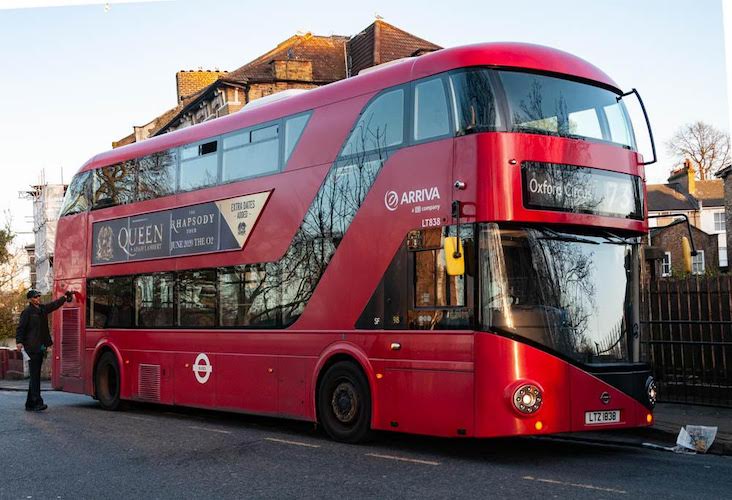London’s official transport watchdog has called on Transport for London to take “urgent action” to address a fall in the average speed of bus services around the city, along with a related decline in the number of bus passengers.
London TravelWatch, an independent body funded and supported by the London Assembly, has produced a five-point plan to increase bus speeds, which have fallen below nine miles per hour for the first time ever according to TfL performance data.
The measures proposed are:
- Longer hours of operation for bus lanes and adjustments on “red route” roads managed by TfL, which carry 30 per cent of London’s road traffic and restrict parking and loading in order to keep traffic moving.
- A review of parking provision on bus routes.
- Creating more streets that are for buses and bicycles only.
- Extending the period in which the Central London congestion charge applies.
- Investigating more road-user charging in general in the medium term.
Buses are by far the most-used form of public transport in London, with 2.2 billion journeys made on them every year – about 40 million a week – compared with 1.4 billion on the Underground.

A review of bus services has seen some routes axed, a new one introduced and several others altered in length and frequency. There has been some shift of capacity to Outer London but an overall loss of seven per cent of total mileage across the city.
London TravelWatch chair Arthur Leathley emphasised that “many people have no alternative transport” to the bus while slower services have become “a real deterrent” to using them which will see a continuation of the fall in bus passenger numbers seen in the past five years.
Nick Biskinis of the Clapham Transport Users’ Group said that the Number 88 has frequently become stuck of Vauxhall Bridge Road in recent years, leading to more overcrowding and slower journeys, with “disabled people in particular being penalised by the de-prioritisation of buses”.
In an autumn 2018 interview with On London, John Trayner, boss of London’s biggest bus operator Go-Ahead, expressed fears that the success of the London bus service was in danger of being forgotten and that cuts to the network would start to break it up and accelerate its decline.
Photograph by Omar Jan.
OnLondon.co.uk exists to providing fair and thorough coverage of London’s politics, development and culture. It depends on donations, including from readers. Can you spare £5 a month (or more) to help the site keep going and growing? If so, follow this link. Thank you.


Once upon a time there were traffic policemen available to help sort out the logjams that cause most delays. Whose responsibility is this role? The Number 2, 432, 68, 468 and 176 can all be caught in the recurrent gridlogs caused by the Thames Water mains replacement on the Norwood Road, it is one of many such current black spots. Then there are the delays caused by the creation of cycle lanes and adjustments to traffic lights to favour cyclists and pedestrians. Then there are all new 20 mph speed limits. How important are these to bus speeds compared to whatever effect the measures proposed might have? I have never driven a car within the congestion zone and gave up cycling to work over forty years ago (on safety grounds) so I have a vested interest in improving bus speeds. But this smacks of political correctness rather than a real attempt to improve the situation.
one annoying thing that happens is when they are “stopped for a few minutes to regulate the service” even when it is only one or two stops from the terminus. I can see why this has to be done to stop two or three coming at once but thete’s no.point doing it when they could easily wait at the terminus and people would be at their destination
Its not because there isnt room for them at the terminus. I have seen it happen when there is bags of room at the terminus.
[…] month, it urged Transport for London to take “urgent action” over a decline in average bus speeds across the capital, which […]